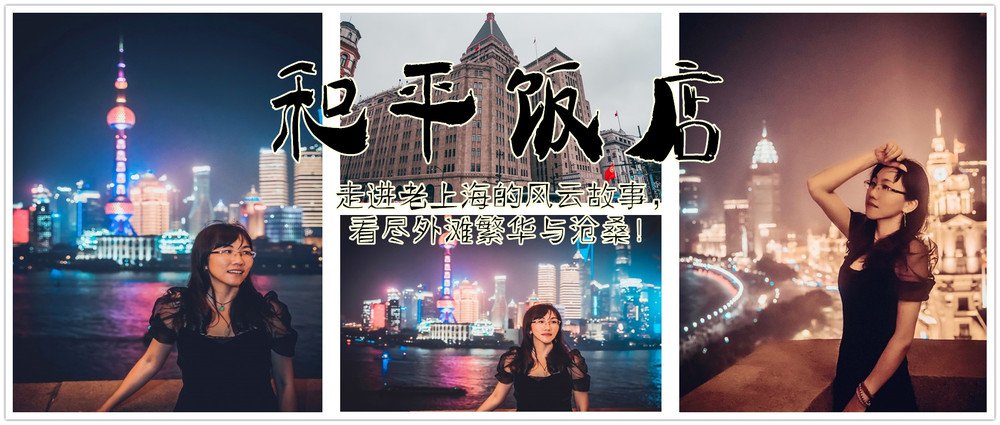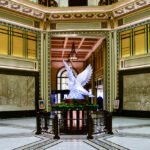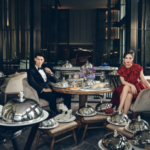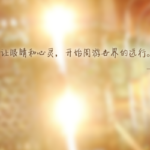Duration: 2 days, Time: July, Average Cost per Person: 6000 yuan, With Whom: Spouses, Activities: Photography, Free Travel. The author visited these places: Shanghai Bund, Suzhou River, Waibaidu Bridge, Huangpu River, Peace Hotel. The Peace Hotel, Oriental Pearl Tower, Customs House, Nanjing Road Pedestrian Street. Published on 2020-08-02 11:21. It is said that to see two thousand years of Chinese history, one goes to Xi’an; to see one thousand years, one goes to Beijing; to see one hundred years, one goes to Shanghai. The history of Shanghai is a microcosm of modern Chinese history. This place was once a public concession, with dozens of classical revival buildings of different styles standing on the Bund, vividly depicting the charm of Shanghai in the 1920s and 1930s. It is known as the ‘World Architecture Exhibition’ of the Bund. Countless movie scenes with magnificent turns, countless stories that resonate through the night, all fall within this legendary city, constantly performing classics that have never been surpassed. The Bund is 1.5 kilometers long, starting from Yan’an East Road in the south and ending at the Waibaidu Bridge over the Suzhou River in the north. The east side is the Huangpu River, and the west side is the concentration of old Shanghai’s financial and foreign trade institutions. Visiting the Bund to enjoy the beauty of the Huangpu River and to see the old buildings has become a must-do for tourists. Among the dozens of old buildings on the Bund, this one with a green roof, known as the ‘First Building of the Far East’, is worth mentioning. In 1929, Ellis Victor Sassoon, a wealthy British Jew at the time, built a hotel on the Bund in Shanghai, almost bringing the whole of Europe over. It was then called the ‘Cathay Hotel’. After more than 90 years, it still stands on the Bund as the ‘Peace Hotel’. Its existence is far more valuable than an ordinary hotel. Entering it is like stepping into the years of old Shanghai. Now, even if you do not stay, you can visit this most representative building in China and savor the charm of the Bund. The classic tour of the Peace Hotel includes visits to the lobby, Jasmine, Jazz Bar, Peace Museum, East Corridor and Bund East Gate, Cathay Room, Dragon and Phoenix Hall, Lalique Corridor, and Peace Hall. Shanghai writer Chen Danyan wrote in her book ‘Becoming the Peace Hotel’: ‘No monument can be more suitable than the Peace Hotel to be the monument of Shanghai. In the open, simple, and knowledgeable way of a big hotel, it connects and proves the vicissitudes of the past, which is richer and more real than any single monument.’ It can be said that the stories of the Bund over the past hundred years, the celebrities and elegance of the times, are all condensed here. On this trip to Shanghai, I was fortunate to stay at this legendary hotel and feel the sentiment of old Shanghai. [Lobby: Octagonal Dome and Silver Engraving of Shanghai Miniature] For a long time, the octagonal dome on the top of the lobby was closed. In the major renovation in 2007, the glass skylight of the lobby was reopened to the world.
In the center of the lofty and spacious lobby, the stained glass on the ceiling is so magnificent that people can’t help but stop and look up. The colored glass in gold and pink-green is inlaid on the octagonal atrium. Let the light flow down clearly from the air, warm and bright. Above the dome, you can also see the symbol of the Victor family, ‘hound’. He himself is also keen on horse racing and hunting. Initially, he named the bar ‘Horse and Hound’. The ‘dove of peace’ in the center was donated by an artist on the 90th anniversary of Peace Hotel. It is made of 1580 pieces of colored glaze. It shapes its body by relying on traditional colored glaze craftsmanship and tells the graceful posture of the dove of peace spreading its wings in a deconstructive modern art language. Avant-garde yet dignified, calm yet romantic. Its meaning just coincides with ‘Peace Hotel’. The dove of peace represents peace and is also the best symbol of the image of Peace Hotel. Around the dove of peace, there are four silver prints of Shanghai in miniature, showing the style of the Bund in the 1920s and 1930s, which makes people’s imagination run wild. The east gate of Peace Hotel is usually closed. It is said that according to feng shui, facing the Huangpu River will dissipate all property. This retro staircase has become a great photo spot for tourists. The wedding ceremony area of Chaplin is also here. The elevator leading to the restaurant also goes up from here. In the corridor leading to the east gate, there is also a photo exhibition. You can see classic scenes filmed here, such as ‘City Without Night’, ‘Tiny Times 3’, ‘The Silent War’, ‘Forever Enthralled’ and ‘Unreachable’ and so on. [Peace Museum, the first hotel-style museum in China] Have you ever known that there is a museum hidden in this most landmark hotel in Shanghai? This is probably also the first museum established in the form of a hotel in China. Hidden up an inconspicuous staircase at the corner on the first floor. Guests can visit for free. The museum area is not large, but it condenses the 91-year history of Peace Hotel. The museum exhibits a batch of ‘antique-level’ supplies such as copper ice bucket pots engraved with the words ‘Cathay Hotel’ (the predecessor of the north building of Peace Hotel), copper key tags, copper thermos bottles, copper ashtrays, silver spoons, etc., as well as famous calligraphy and paintings by Wu Changshuo, Fu Baoshi, Liu Haisu and other masters. Various utensils full of a sense of age are full of mottled historical imprints, recording the glory left by the original owner Sassoon and his star politicians and friends. Looking at these old photos in front of you, scenes of historical pictures flash before your eyes. From Sun Yat-sen to Lu Xun, from Chaplin to Montgomery, the anecdotes of celebrities in ‘old Peace’ add some interesting topics when people look back on the years. The playwright George Bernard Shaw visited, General Wedemeyer of the United States came, General Marshall stayed, and even President Stuart and the famous Indian poet Tagore also stopped here; American comedy master Charlie Chaplin and the heroine of ‘Modern Times’, Paulette Goddard, checked into Room 51; After the founding of New China, Peace Hotel has also received Queen Elizabeth II of the United Kingdom, former US president Clinton and other leaders.

This small museum can be said to display the historical records and human legends from the Cathay Hotel to the Fairmont Peace Hotel. The profound historical heritage and rich cultural accumulation make the Fairmont Peace Hotel a ‘building prop’ in 33 movies and TV dramas. Now, the Fairmont Peace Hotel Museum is open for guests to visit, and tourists can also pay for a visit to experience the most iconic building in Shanghai and step into the turbulent years of the Bund. In this tranquil space, it tells the historical and human stories of the Cathay Hotel (1929 to 1952), the Fairmont Peace Hotel (1956 to 2007), and the new look of the hotel after meticulous renovation and reopening on July 28, 2010, allowing people to understand the nearly hundred years of ups and downs of this building. Wandering around the museum, enjoying the feeling of time passing, looking at the Sassoon-era desks, and flipping through old Shanghai books, the taste is really good. 【Nine Countries Suites, Living in the Luxury of the 1930s】Staying at the Fairmont Peace Hotel for one night is the first choice for many tourists visiting Shanghai. Only here can you feel the most original taste of Shanghai and the sentiments of old Shanghai. The entire hotel has 270 unique luxury rooms and suites, equipped with furniture combined with Art Deco style and modern living facilities. It is worth mentioning the Nine Countries Suites located on the 5th, 6th, and 7th floors. These suites are Sassoon’s imagination and concept, he wanted to incorporate the styles of different countries into the Cathay Hotel. Now, the Indian, English, Chinese, and American suites directly inherit the original style of the Fairmont Peace Hotel, while the French, Italian, Spanish, Japanese, and German suites have been redesigned on the basis of maintaining the original concept of different countries and historical styles, each suite is about 178 square meters. During this trip to Shanghai, I had the honor of staying in the French Suite. Follow my camera to see what it looks like inside? The French Suite is located on the 6th floor, and guests staying in the suite can directly go to the 9th floor’s Golden Noble Executive Floor for check-in services and enjoy free access to the Golden Zun Lounge for European breakfast and afternoon tea snacks. Upon opening the door, a suite of about 178 square meters presents itself, first a corridor, and at the end of the corridor, there is a bar. The overall layout of the French Suite is to advocate an elegant and fashionable style, with classical wallpaper in the style of the Art Movement, as well as walnut carved furniture and luxurious design fabrics. The living room is the filming location for the first episode of the TV series ‘The Negotiator’, where Yang Mi was sitting on the sofa here. The design of the fireplace also highlights the European style, with a strong retro charm. The dining room has a view of the Bund, facing the Oriental Pearl Tower, especially when the lights are turned on at night, it is breathtakingly beautiful.
In a corner of the dining room, an old-fashioned clock is placed, bringing people into the distant memory of Shanghai in the 1930s. Taking photos in a cheongsam is extraordinarily elegant. In the middle of the bedroom is a comfortable large bed. The mattress is soft but there is no sinking feeling when lying down. Even people like me who usually have a bad lumbar disc feel very comfortable. The charming marble bathroom has a large bathtub. All toiletries are from the ROSE 31 series of Le Labo. The unique fragrance directly leads people into a prosperous olfactory space. Many dignitaries, celebrities and stars have stayed in these suites. Many film and television drama shooting locations are also here. The ‘Nine Nations Suites’ present the charm of another era for tourists in this prosperous metropolis of Shanghai, a kind of noble charm with extraordinary taste. The elegance of the 1930s can be glimpsed from the solemn oak wall decorations and wooden window sills. Leaning on the window sill, looking at the Huangpu River and listening to the whistles of passing ships and the clock tower of the Bund Customs House, one is filled with emotions. [Cathay Room, the most beautiful observation deck on the Bund]. The predecessor of Cathay Room was the ‘grill room’ of Peace Hotel. At that time, it meant the top Western restaurant, and the rich from all over the world came to check in. Up to now, the open-air private room with the best view still needs to be reserved in advance for 6,000 yuan per night. Window seats need to be reserved more than a week in advance. This is an excellent shooting location for seeing the Bund in Shanghai. The meals presented in the form of set menus are also very delicious. Lunch is 388 yuan/person + 15% service charge. Choose one from appetizer, main course and dessert. Appetizer: Spanish sausage baked eggs. Spanish sausage is matched with spicy sauce. The side dishes also include mushrooms and roasted potatoes. Main course: lamb chops. The degree of doneness can be selected. Medium well is selected. Two large Australian lamb chops are matched with green vegetable puree and rosemary sauce, making the taste of lamb chops better. The yellow one is mille-feuille potatoes (almost didn’t recognize it as potatoes). It has a layered taste and a slightly crispy feeling. The red one is pickled red onions with a sweet and sour taste. Dessert: Pavlova cake. It is a small rectangular cake. It is not overly sweet and greasy. The taste is relatively refreshing. It is also matched with a scoop of chocolate ice cream. It’s a favorite in summer! Afternoon tea is also in the form of a set menu. The desserts on the dessert stand are matched. Tea and beverages can be freely chosen! It’s very comfortable. The open-air cocktail lounge on the roof is also an important part of the Bund skyline. Standing here, you can enjoy both sides of the Huangpu River and appreciate the most beautiful urban landscape of Shanghai. When night falls and the lights are lit up, the lights on both sides of the Bund are flowing and beautiful. This is also the best shooting location for portraits. With the Bund as the background, there is a strong sense of time travel (two girls took no less than 100 pictures here… Hahaha). [Dragon and Phoenix Hall, classic and luxurious Chinese restaurant]. Located on the 8th floor, Dragon and Phoenix Hall features traditional Chinese red pillars and green walls, Khitan gold patterns and the famous dragon and phoenix ceiling, creating a classic and luxurious style and atmosphere, making guests travel through time and space as if they were in a food paradise enjoyed by the royal family.
The Dragon and Phoenix Hall is a well-known high-end Chinese restaurant, serving the most classic Shanghai and Cantonese cuisines. The ingredients are meticulously selected, the service is attentive, and the vintage elegance makes you feel as if you’ve been transported back to those glorious years. The Classic Shanghai Smoked Fish, as the most iconic cold dish series of Shanghai cuisine, has a taste that is quite acceptable to Southerners, not overly sweet, with fish that is just right in terms of crispiness and fragrance. The fish is served with a perfect combination of sweet and sour flavors, known as ‘Zaotan Pot’, a unique local dish in Shanghai that only the most seasoned Shanghai foodies are familiar with. The Zaotan series offers a wide variety of flavors, with various ingredients that can be filled in, making it a truly delicious and classic ‘eclectic’ dish. Here, it is combined with duck tongue, shrimp, fava beans, and Arctic clams, creating a harmonious mix of meat and vegetables. When eaten, it is rolled in the sweet and sour sauce at the bottom,带着 a faint aroma of wine as it enters the mouth, it is incredibly delicious! The Double-Flavored Xiaolongbao, served with a mist surrounding them, four per layer, filled with shrimp and pork respectively. Gently lift the top to sip the soup before consuming the filling. The Grilled Silver Cod is a favorite dish here, with the cod fish being incredibly tender, and the sauce is also very unique. Adjacent to the Dragon and Phoenix Hall is the Lalique Corridor. For the Lalique art glass, young people in China today may feel unfamiliar, but for those ‘old克拉’ and ‘last little open’ who have lived in Shanghai for more than half a century, it is a distant and beautiful dream. Lalique art glass was a precious special glass art that swept the world last century, particularly enchanting Europe. Its most famous product is a type of glass art called Opalescent glass, which incorporates antimony, arsenic, and cobalt during the firing process. Works made using this technique have a special color effect, available in both transparent and frosted versions. These products appear milky white from a distance, dark blue up close, and bright red when light shines through them, like a ball of fire, incredibly magical. The Lalique art glass decorations in the Peace Hotel include screens with flowers and birds, flying pigeons spreading their wings, and fish swimming at the bottom, making one feel as if they are in a crystal world, and they are also very valuable. [The Peace Hotel’s Elderly Jazz Band, a Vintage Echo by the Bund] As night falls, at the Peace Hotel, the central location of Shanghai, familiar melodies can be heard, the vintage charm of old Shanghai from the 1920s and 1930s slowly flows out in those well-known old songs. When you walk into this jazz bar, and when you see the people performing on stage, the shock at that moment is indescribable. Their white hair contrasted with their spirited blue suits, their focused expressions, and their thin fingers moving across the instruments they hold, they are the Peace Hotel’s elderly jazz band. The Peace Hotel’s Elderly Jazz Band was established in 1980 and is one of the most famous jazz bands in Shanghai, as well as the only elderly jazz band in the country.
The average age reaches 80. For 40 years, rain or shine, they bring classic jazz to the jazz bar on the first floor of Peace Hotel every night. You can’t see any decadence of these octogenarians at all. Their love for music and enjoyment of life are shown on them, which really makes us young people who often complain of being tired feel ashamed. Why can the jazz bar of Peace Hotel be rated as one of the best bars in the world by Newsweek in 1996? In the past 40 years, why can it always be written into the must-visit attractions in travel guides and become a Shanghai scenery in the hearts of political leaders from all countries and ordinary people? This group of old musicians, known as ‘the evergreen tree in the art field’, are especially good at playing famous jazz pieces from the 1930s and 1940s and famous pieces from all over the world. Their ‘legend of immortality’ has also become a beautiful scenery of Shanghai Peace Hotel. Today’s north building of Peace Hotel was once called Cathay Hotel and Sassoon House in history. It has the reputation of ‘the first building in the Far East’. It is the first high-rise building built by Jewish businessman Victor Sassoon in Shanghai and also the first modernist building in the history of modern architecture in Shanghai. It can be said to be the most worthy building to visit on the Bund. Now even if you are not a hotel guest, you can pay for a visit and see the charm of old Shanghai. In 1980, jazz that had been interrupted for nearly 40 years echoed in Shanghai again. Foreign guests felt that this is not only a band that can play foreign music pieces, but also a signal of China’s reform and opening up. Soon, the elderly jazz band became the signature of Peace Hotel. In front of us, the musicians are old, the instruments are old and the music scores are yellowed. But such a ‘three-old’ combination has a particularly touching charm. As the music starts, many people can’t help dancing. A piece of foxtrot or rumba makes this small jazz bar more charming, as if returning to the ball held in the old foreign-style house in the 1930s. While listening to the music, you can also sit close to the bar and watch the handsome bartender making drinks. The minimum consumption per person entering the jazz bar is a glass of drink, about 100 yuan per person on average, which is actually very cost-effective. Tasting a romantic cocktail in the jazz style of old Shanghai is also a unique experience. Compared with the ‘little fresh meats’, these ‘old bacons’ are more memorable. Knowing that we are from Xiamen, the current leader comes to chat with us. His talkative manner makes us feel their feelings. He likes new things and is also happy to share their joy. ‘People all say that seeing us is like seeing the prosperity of old Shanghai. In fact, no. What we witness is a brand new Shanghai.’ If you come to Shanghai and if you pass by the Bund at night, even if you don’t stay at Peace Hotel, it is strongly recommended that you come to the jazz bar and listen to a live performance of the elderly jazz band.
Accompanied by classic jazz music and sipping a Sassoon cocktail makes one feel as if they have returned to the ‘golden age’ of the last century. With flickering candles and floating musical notes, the dream of old Shanghai is vividly portrayed. [At the end] If we talk about the building that best represents Shanghai, Peace Hotel must be mentioned. Its existence is far more than just a hotel. It condenses nearly a century of historical charm of Shanghai. Every brick and tile, and even every tableware and musical instrument has its unique charm. It is most accurately described as a monument of Shanghai. A revolving wooden door separates Peace Hotel from the bustling Nanjing Road Pedestrian Street outside. This separation seems to bring one back to Shanghai’s past all of a sudden. From the present to the past, only those who understand it can appreciate the legend behind the door and the stories in the legend. Shanghai Trip | Check in at Peace Hotel, step into the legendary stories of old Shanghai and witness the prosperity and vicissitudes of the Bund!






